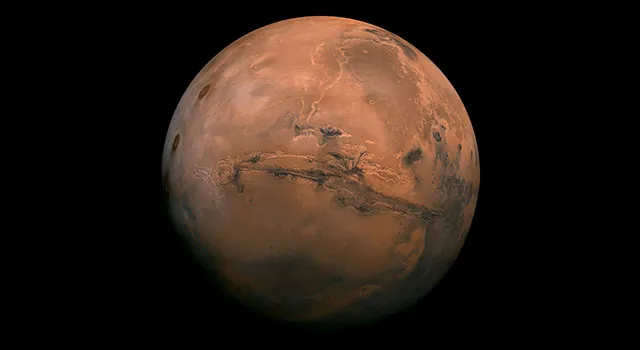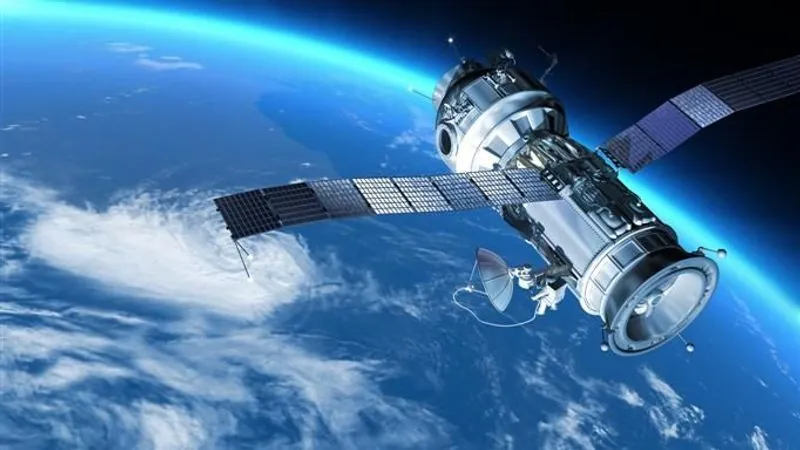
Pioneering a New Era: The Revolutionary Path to Landing Heavy Payloads on Mars
2024-11-18
Author: Sarah
Introduction
In a conversation that reshaped perspectives on Mars exploration, engineer Rob Manning from the Jet Propulsion Laboratory (JPL) reflected on the complexities of landing human missions on the Red Planet. As we approach 2024, Manning's insights reveal significant advancements made in the last two decades, transforming once seemingly insurmountable challenges into feasible opportunities.
Progress Since 2007
Back in 2007, Manning voiced skepticism about the ability to land humans on Mars, despite successfully leading entry, descent, and landing (EDL) operations for several rover missions. "We’ve made huge progress since 2007," he stated, highlighting how the landscape of Mars landing technology has evolved. However, the core challenges connected to Mars’ uniquely thin atmosphere—over 100 times thinner than Earth’s—continue to pose difficulties, especially as future missions aim to deliver even heavier payloads ranging from 20 to 100 metric tons.
The Challenges of Mars Landing
Many assume that landing humans on Mars should be straightforward, given our Moon landings and successful returns from Earth’s orbit. Still, Manning clarified, "Mars isn’t a simple middle ground between Earth and the Moon." The notoriously thin atmosphere presents unique hurdles, requiring spacecraft to decelerate from near interplanetary speeds—like the Perseverance rover which entered Mars' atmosphere traveling at 12,100 mph—to subsonic speeds in mere minutes. This necessitates innovative solutions that traditional methods cannot address.
The Supersonic Transition Problem
In 2007, engineers concluded that Mars’ atmosphere is insufficient for Earth-style landings yet too dense for the propulsive landings used on the Moon. Manning described this as the "Supersonic Transition Problem," a stark gap between the performance of large entry systems and the deceleration technologies that must be employed as the spacecraft descend.
Previous Landing Milestones
Previously, the heaviest payload to successfully land on Mars was the Perseverance rover at approximately 1 metric ton. The landing showcased an intricate series of maneuvers, utilizing devices like the Sky Crane, which will be dwarfed in complexity by future human-rated spacecraft requiring significantly more advanced deceleration techniques.
Investigating Retro Propulsion
Today, Manning’s team is investigating the potential of retro propulsion—essentially firing engines backward at supersonic speeds to shed velocity—an idea that seemed implausible back in the early stages of development. Concerns persisted that such an approach could create shock waves and instabilities in the spacecraft. Despite these challenges, revolutionary success came when SpaceX began conducting trials, aiming to land their Falcon 9 boosters from orbit.
SpaceX's Innovations
On September 29, 2013, SpaceX executed the first supersonic retropropulsion (SRP) maneuver, successfully managing to slow the booster’s descent despite it ultimately crashing into the ocean. This breakthrough set the stage for a collaboration between NASA and SpaceX that spanned several years, with both entities pooling resources and data to enhance their understanding of supersonic landings under Martian conditions.
Milestones in Rocket Landings
By December 21, 2015, a Falcon 9 first stage accomplished a historic milestone, marking the first successful landing of an orbital-class rocket. The implications were profound: researchers could now see that SRP was a viable, scalable solution for landing heavier payloads on Mars without necessitating entirely new technologies.
Remaining Challenges
However, critical issues linger unresolved. For instance, the steering and navigation of large spacecraft such as SpaceX's Starship through Mars' tumultuous atmosphere remains an enigma, compounded by concerns over dust storms, wind shears, and debris kickup during heavy-engine landings. Logistical hurdles concerning the establishment of necessary infrastructure and fuel supplies for return missions also need addressing.
Looking Ahead
Manning cautions that the journey to human Mars landings could take longer than most anticipate, primarily because attempts to test out solutions face a lengthy two-year wait period until the next favorable launch window. "The next time you can try again is 26 months later," he said.
Conclusion
Yet, with the groundwork laid for retro propulsion, the possibility of human exploration on Mars seems more tangible than ever. "We’re basically doing what Buck Rogers told us to do back in the 1930s," Manning concluded, pointing to the fusion of historical vision and modern technology that could redefine humankind’s reach into the cosmos. Stay tuned – the next chapter of space exploration is about to get even more exciting!


 Brasil (PT)
Brasil (PT)
 Canada (EN)
Canada (EN)
 Chile (ES)
Chile (ES)
 España (ES)
España (ES)
 France (FR)
France (FR)
 Hong Kong (EN)
Hong Kong (EN)
 Italia (IT)
Italia (IT)
 日本 (JA)
日本 (JA)
 Magyarország (HU)
Magyarország (HU)
 Norge (NO)
Norge (NO)
 Polska (PL)
Polska (PL)
 Schweiz (DE)
Schweiz (DE)
 Singapore (EN)
Singapore (EN)
 Sverige (SV)
Sverige (SV)
 Suomi (FI)
Suomi (FI)
 Türkiye (TR)
Türkiye (TR)